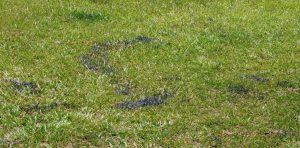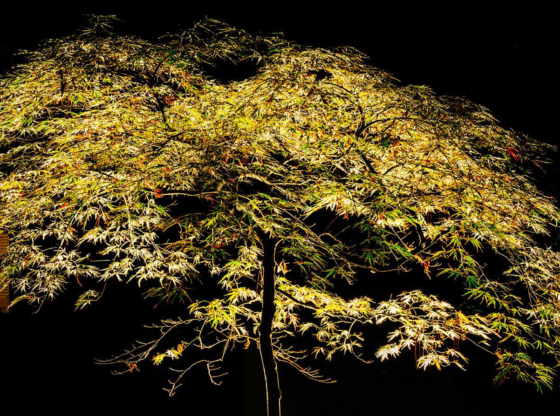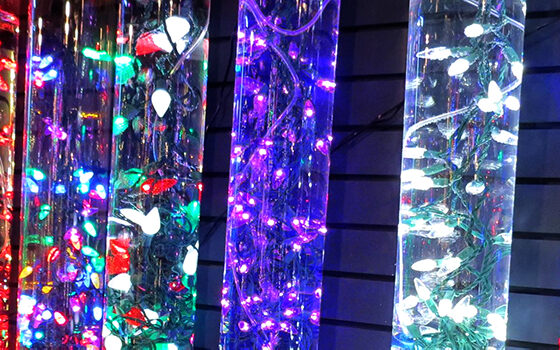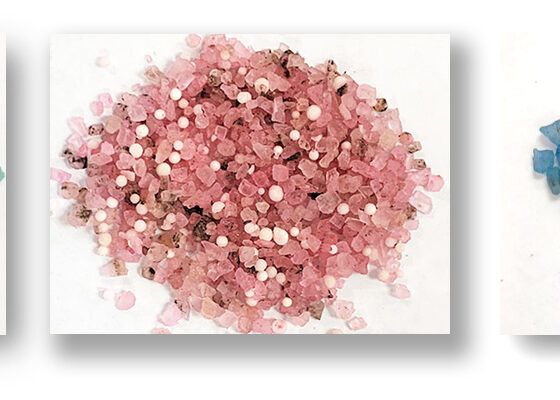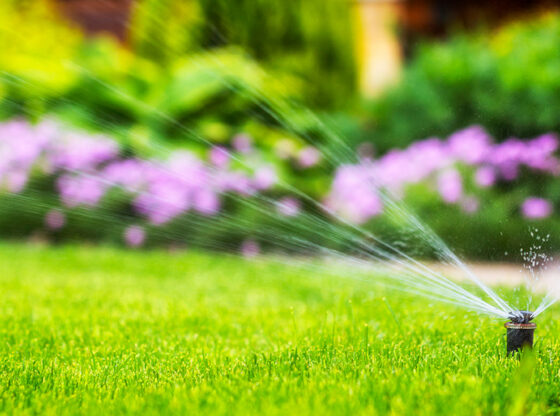A lawn is the shinning glory of a home. Green, lush grass or turf make any home stand out. Lawn diseases such as powdery mildew, fairy ring, slime mold, red thread, and rust can threated a lawn. The key to keeping lawn diseases in check is prevention and monitoring.
Chemicals can be used to rid yards of diseases but, are not always the best options. For many homeowners, various cultural practices may reduce the incidence and severity of these diseases.
Powdery Mildew
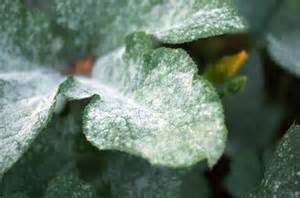 Powdery mildew leaves leafs’ surfaces white. This disease appears most in the spring and fall. Cool, cloudy conditions, and shade are feeding grounds for this disease. It can be caused by having plants too close to each other. This pest can be managed and prevented by increasing air circulation and sunlight, while regularly trimming the landscape.
Powdery mildew leaves leafs’ surfaces white. This disease appears most in the spring and fall. Cool, cloudy conditions, and shade are feeding grounds for this disease. It can be caused by having plants too close to each other. This pest can be managed and prevented by increasing air circulation and sunlight, while regularly trimming the landscape.
Caused by the Erysiphe graminis pathogen, it obtains its nutrients only from a living host or tissue. Almost no type of plant is immune, however some are more susceptible than others. Lilacs, crab apples, phlox, monarda, roses, grapes, squash and cucumbers are all more likely targets. This parasite doesn’t kill plants completely but, will cause yellowing and weakening. This is due to a reduction in photosynthesis and will cause thinning in the turf. For further information about powdery mildew click here.
Fairy Ring
Cursing all grass species year around, Fairy Ring is caused by more than 50 pathogens.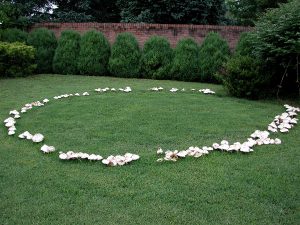 There are three different types of Fairy Ring. The first causes a zone of dead turf. Secondly, a ring of accelerated turf growth will occur. Lastly, a ring of mushrooms may form. Multiple steps are needed to be taken to manage this infestation. Steps can include aerating, use of wetting agents, water management and a fertilizing strategy. For further information about fairy ring click here.
There are three different types of Fairy Ring. The first causes a zone of dead turf. Secondly, a ring of accelerated turf growth will occur. Lastly, a ring of mushrooms may form. Multiple steps are needed to be taken to manage this infestation. Steps can include aerating, use of wetting agents, water management and a fertilizing strategy. For further information about fairy ring click here.
Slime Mold
Slime mold just as it sounds, appears as a slimy black or white substance. Affecting all types of turf grass, this mold flourishes in the cooler months. Although it usually disappears in a few weeks, this nuisance can appear yearly after getting once. Thankfully, slime mold is not typically harmful to turf, just unsightly. Frequent mowing, rinsing and aeration of the lawn can dissipate the mold. For further information about slime mold click here.
Red Thread
Red thread appears during warm, humid, and cloudy months. As the most common turf 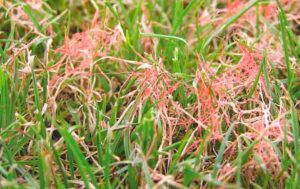 grass disease, it is often found in lawns using low nitrogen fertilizer. The disease first appears in small patches with white and cream colored blades. It is managed by pruning trees and shrubs. This is to promote canopy drying and to increase nitrogen fertility. For further information about red thread click here.
grass disease, it is often found in lawns using low nitrogen fertilizer. The disease first appears in small patches with white and cream colored blades. It is managed by pruning trees and shrubs. This is to promote canopy drying and to increase nitrogen fertility. For further information about red thread click here.
Rust
This is the season for rust, usually is present during the summer and early fall months. 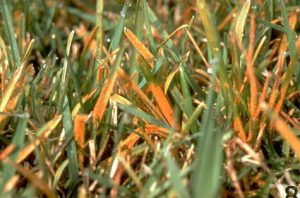 This disease causes thinning in the turf but will not kill the host plant. First appearing as yellowish spots, these spots develop into orange or red blister-like areas filled with orange or yellow spores. The nitrogen fertility is the most effective management technique. For further information about rust click here.
This disease causes thinning in the turf but will not kill the host plant. First appearing as yellowish spots, these spots develop into orange or red blister-like areas filled with orange or yellow spores. The nitrogen fertility is the most effective management technique. For further information about rust click here.
Identifying Fall Threats
Lawns should be inspected once a week to immediately identify problems and act quickly to determine the cause before it’s too late. Diseases tend to start off as small patches or spots of dying grasses that spread over time.
It’s important to follow a regular watering regiment. Using a sprinkler system will help to promote an environment favoring growth of the lawn rather than disease. Applying too much or not enough water can result in unhealthy, slow-growing grass that is vulnerable to pathogens. Water deeper, not more. Deeply watered lawn forces grass roots to reach further in the soil. This develops deeper and stronger roots. This provides grass with greater drought and disease resistance than a shallowly watered lawn.
Identifying the correct type of turf for each home is important. The type of grass chosen for a lawn should be compatible with climate, use, maintenance level, and desired look. It also should have some resistance to common diseases.
Helping homeowners identify what is reeking havoc on their lawn will give you repeated business. Although winter is approaching, fall still brings many obstacles for lawns. Powdery mildew, fairy ring, slime mold, red thread, and rust are just some lawn diseases that can threaten a lawn. Keep lawn diseases in check through prevention and monitoring.


